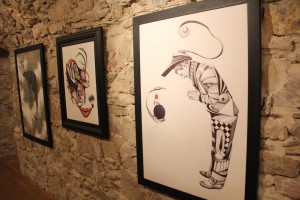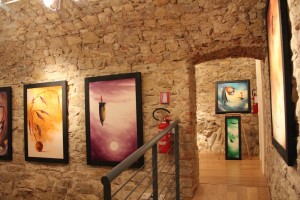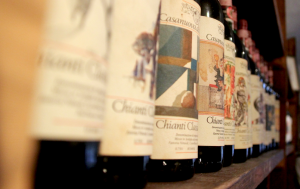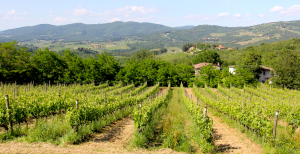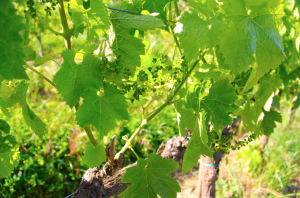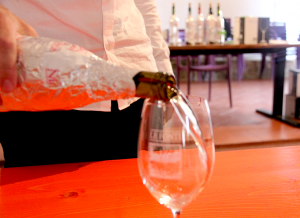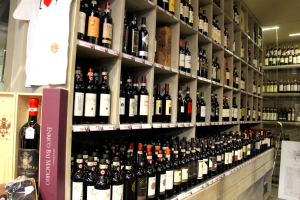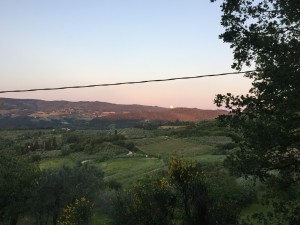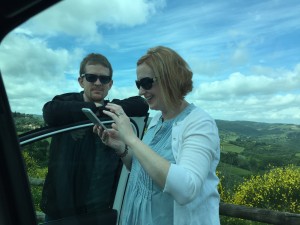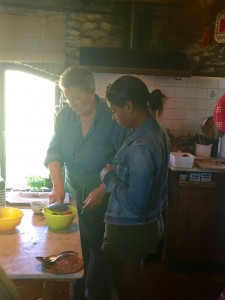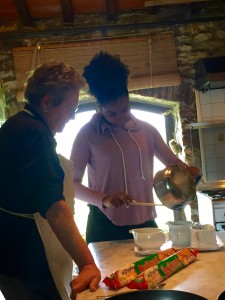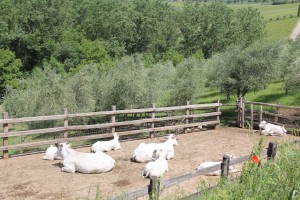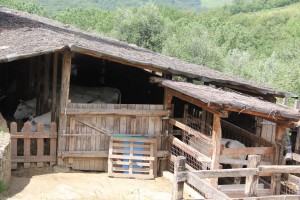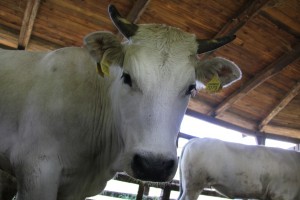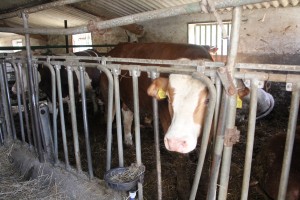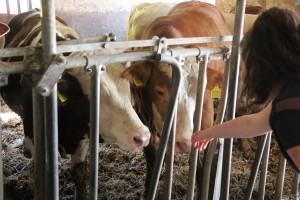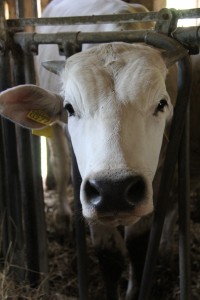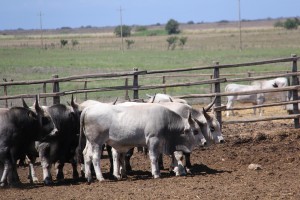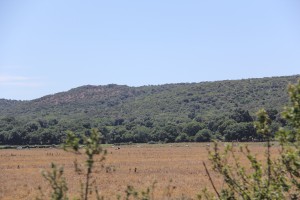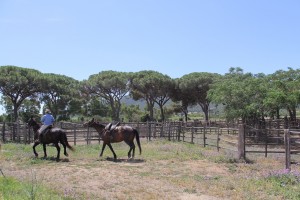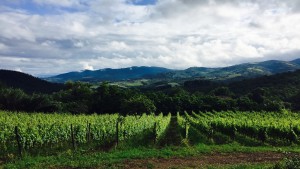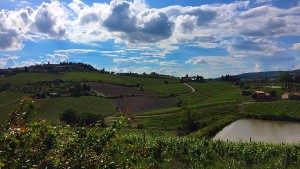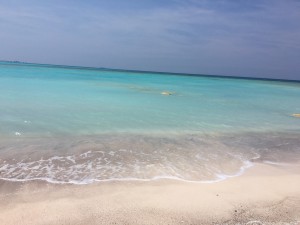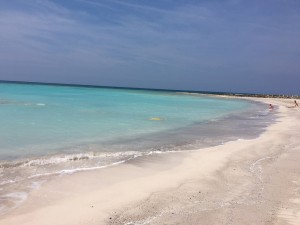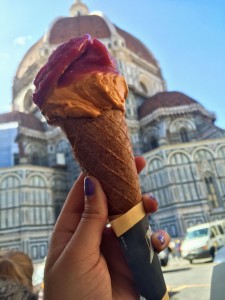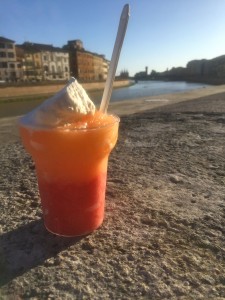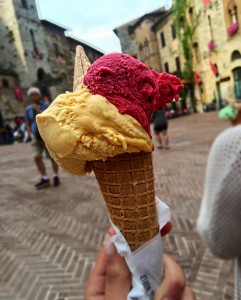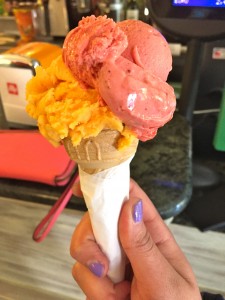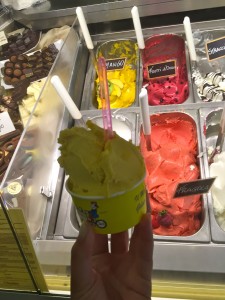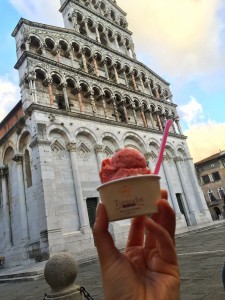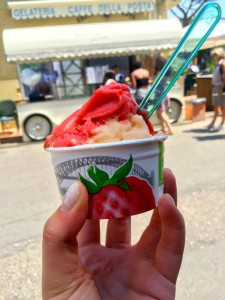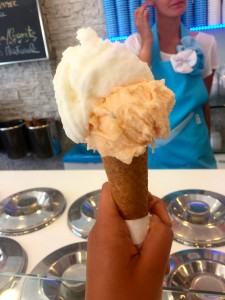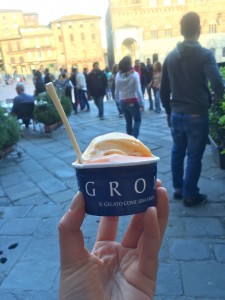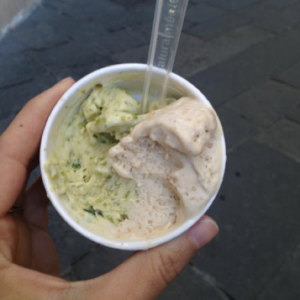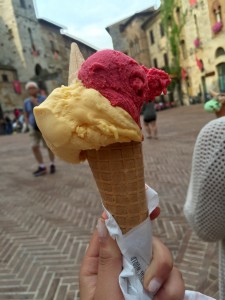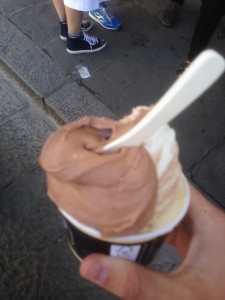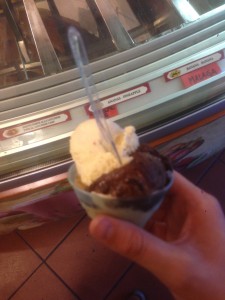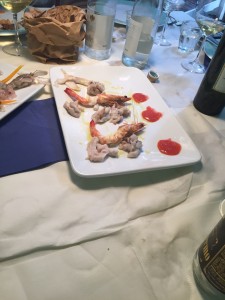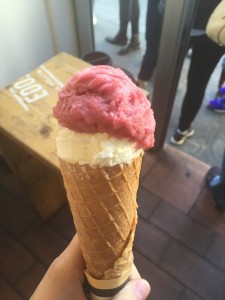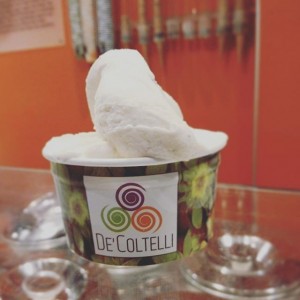L’Arte Parla
June 18th, 2016 by agutie19Spending a month in Italy has been an experience that, in my opinion, could never be put into the right words, but as words are one of the tools of communication I have to try and do so. While I knew that my time in Italy was going to be spent learning about the philosophy of food and the aesthetics and pleasure we derive from food, I was also intrigued with the landscapes, the wine, but most importantly: I was intrigued with the various forms of art. Sometimes accidentally, I would cross paths with sculptures or paintings and would spent at least twenty minutes trying to decipher the meanings behind it or what motivated the artists to create it. I am a person that believes that regardless of what one does, there is meaning behind every action, every recipe, every art; therefore, I felt almost entitled to understand the artist’s perspective or the connection they had to the art that they were presenting. I was left unsatisfied on almost every encounter I had with an artist when asking for an explanation or a small hint to further understand their motive. I started to ask myself, “Does art have meaning, or does personal interpretation give it meaning?
An Unexpected Self-Journey
While in Radda, at a wine festival, I had one of the many encounters that drove me to ask the question that I stated above. On my hunt to find exquisite art, I ran into Martino, one of our excursion leaders, and asked him if there were art galleries nearby that I could visit. Coincidentally, an art gallery was less than one hundred feet away from where we were standing. Martino said that before it turned into an art gallery it was a prison cell. I was instantly fascinated and ready to figure out what other important factors contributed to the artist’s decision to publish his art in a prison cell, a place with deep rooted history. Within five minutes of my conversation with Martino, I was running down the stairs anticipated to see what I would find. I like to think of art as gold, sometimes one finds it and is completely taken away or sometimes one is disappointed, if one’s expectations were not met. But in the long run, it is the search and the adrenaline of finding it in the first place where one finds the most pleasure. In the art gallery, I started to ask the artist questions, and was left with “I do art because I like to feel free and the art represented is metaphysical;” but nothing more than that. After that encountered, I walked around the gallery and saw a wide range of paintings that genuinely appealed to me, but, in my opinion, I still could not fathom that the artist was, in a way, disconnected with his art because he was not able to clearly express what his project was at the moment, or why he chose the space that he did. Yet again, I was trying to find meaning behind the art that was being conveyed and was left to no avail. And that’s when I started to play the art game and ask questions of meaning. Every place that I went to after, left me alone to decide what the sculptures presented.
When we visited Nittardi, a famous winery, I was in awe by their art gallery and the family’s strong connection to art. It turned out that MichelAngelo, one of the most influential artists of Italian history, owned the estate. As a way to pay homage to Michelangelo, the family continues to present art on their wine bottles. Leon, our tour guide, also stated that they place art on the bottles as a way to connect the wine with a specific emotion that they wanted their consumer to obtain while drinking it. Immediately, I asked, what are the meanings behind the artwork that they decide to put on the bottles, or how do they determine what artists are worth painting the bottles? Again, I was not really given an answer. I had to figure out the meanings behind it just for my own pure curiosity. I started to think, and came to the conclusion, that by Nittardi putting art on their wines, it showed their unique identity but also was a form of guidance to their consumers. Asking Leon the meaning behind the painting was my way of figuring out, from his perspective, what the exact experience I was supposed to have while drinking, instead of figuring it out on my own. That is the moment I realized that I could not ask the artist the meaning of his art because they would not always be there and because art is an experience and a self-leading adventure. It needs to be felt within and wrestled with. It is supposed to widen our thought process, allowing the use of imagination, feeding our inner desire of curiosity, and leaving us with more questions than answers.
Wine and Art: Objective Vs. Subjective
In class, we discussed whether it is better to interpret a wine through subjectivity or objectivity when the guest speaker, Leon from Nittardi, came to speak to us. The reason I am discussing wine is because wine is also a form of art. Similar to making a sculpture or a painting, the process in which wine is made is profoundly artistical. One needs all the specific ingredients in order for wine to grow successfully; in the same way when an artist uses a different brush they would have a completely distinct concluding product. Leon argued that when doing a wine tasting, we need to view wine through an objective lens: looking at its colors, taste, and smell in order to obtain a proper description that anyone can understand; instead of using a subjective point of view because subjectivity relies on personal views. He states, “our taste are influenced by who we are as people and our past experiences (Class, 5/26).” Leon believes that we cannot suppress the idea that wine is both objective and subjective. In that instant I realized that by him putting a specific art in front of a wine bottle, and not answering my questions as to what the meaning behind the specific works of art represented, I can infer that he wanted me to have a subjective experience by allowing me to figure out the message and or signification of the art in correspond to the wine bottle. Leon’s perspective that wine is subjective and also objective reflects the question that I have been pondering all month long. Art has meaning in an objective sense and each analyst also gives it significance through their own perspective of what is occurring at the time, whether in a wine glass bottle or on a sculpture.
This brings me to Elizabeth Telfer’s article “Food for thought” that we had recently discussed in class. Telfer states, “If something is a work of art, then its makers or exhibitors intended it to be look at with or listened to with intensity, for its own sake (45).” In this argument, Telfer is declaring that we should appreciate an object for the purpose that it is a work of art and not because it brings pleasure or benefits to oneself. Telfer argument is valid in the aspect of a work of art because an artist intended to position a specific art so that the interpreters could be influenced and find importance in it. I say this because we are all humans and we are all driven by our deepest emotions. Therefore, when we look at art we can appreciate it for what it is, but at the same time in order for us to truly appreciate it, we have to find a connection with the art piece. Art by itself has substance and value, but I would not be able to appreciate it to the greatest extent if it did not have a connection to a part of my identity. Leon, for example, appreciates the wine’s taste and smells but also finds pleasure in sharing that experience with others because it showcases a part of his identity as this is what he does for a living. It is the same way with art.
Similar to food and wine, art is left to be interpreted by the individual and this interpretation changes. A wine’s aging process, for example, is a perfect model that showcases this ever-changing nature. When a wine is first bottled, it will taste differently than ten years from now because it continues to ferment. This is because it is not supposed to stay the same, and we also have to adjust to it. Similar to wines, art is something that will always be open-ended. While in his article Andrea Borghini reflects on recipes, his standpoint of recipes being open-ended also applies to the arts. He states, “As instances of a recipe keep being delivered, the recipe is bound to change… Thus, we cannot identify all the instances of those recipes, if by ‘‘all’’ we mean also future instances; because we do not know yet how the recipes will evolve and because their possible instances are countless (Borghini, 736).” Similar to recipes, art can evolve. In the same way that it can sometimes start with a functionality, the meaning can change over time which could result in a certain piece becoming art. As time continues, the significance of the art itself can change but also the meaning that it conveys to others can mature.
Monastery
Last but not least, I am going to touch on my favorite encounter with art, at a place where I would have not expected: a monastery. The monastery was the final revelation to me that I had to find my own ways to interpret art, and truly conveyed to me that I was playing a game. The art game. An artist presented me with a painting, or a sculpture and it was up to me to find my own meaning within what they gave me. While at the monastery, we were given a tour and were shown different art pieces that related to the philosophy of the monastery: which is to live well. Without me asking, the monk, Friar Roberto, stated “Art does not represent anything, it is what it represents in your heart. In each of us we have to find the sound of life.” He was the first person that directly answered my questions, but I did not necessarily agree with him. I believe that art does have meaning in itself, because the person that created it gave it meaning to their life, and while the interpreters necessarily do not know that side of the story, and have the ability to figure out their own perspective, It could not have been created if there were not ideals or experiences that the creator itself wanted to portray.
Conclusion
Although the artists that I engaged with on this maymester have not fully communicated with me their unique perspective, I have learned that by them presenting me with a piece in itself has meaning, and my understanding of their work also gives the artwork magnitude. Friar Roberto once said, “To live is to wait for those moments when we are stuck.” I have found those moments to be when I am gazing deeply into an object, and seeing it in it’s most profound beauty. Art has significance because it is art, but it also has significance because we are able to observe it using our imagination which allow us to undergo a magical experience. Thank you Italy, for giving me a new profound love!

